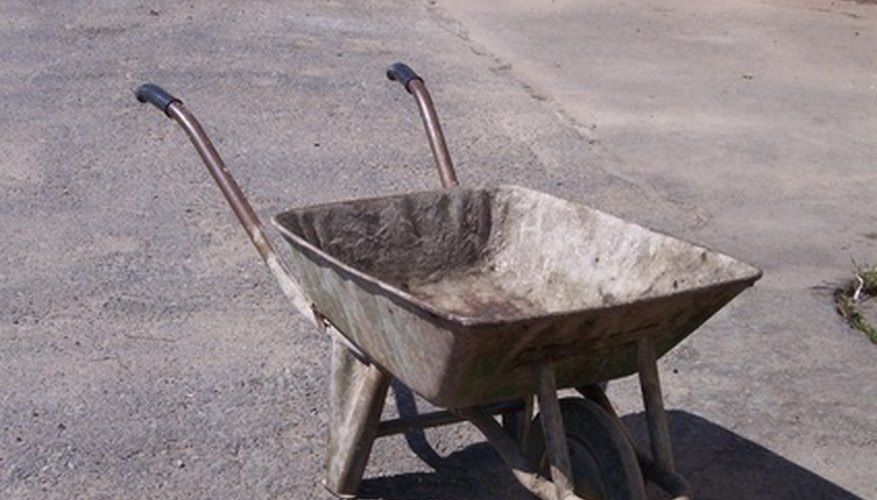A coal forge is essentially a large metal or clay pit that holds burning fuel and provides an air source to maintain extreme temperatures. Rather than purchasing a forge, the hobbyist blacksmith can construct a coal forge from a discarded wheelbarrow. Because of the modifications necessary to make a forge, the wheelbarrow will not be suitable for other tasks once converted. The mobility of the wheelbarrow allows you to work outside in good ventilation and away from flammable material. In addition, converting a wheelbarrow already in your possession means not having to make storage space for a new forge.
- A coal forge is essentially a large metal or clay pit that holds burning fuel and provides an air source to maintain extreme temperatures.
- The mobility of the wheelbarrow allows you to work outside in good ventilation and away from flammable material.
Set the wheelbarrow on the designated spot and brace the wheel and support legs with concrete blocks. This area should be concrete or gravel, and away from shrubbery to prevent fires from sparks.
Inspect the wheelbarrow for holes or cracks. Do not use the wheelbarrow if it has rusted through. Remove the handles if they're made of wood.
Cut a hole in the centre of the wheelbarrow bottom to accommodate a stainless steel sink drain. Use a metal hole saw or blow torch.
- Inspect the wheelbarrow for holes or cracks.
- Cut a hole in the centre of the wheelbarrow bottom to accommodate a stainless steel sink drain.
Weld the sink drain in place. This will serve as the tuyere, or air entry, for the forge. Place a cast-iron floor drain cover over the drain to prevent hot coals from falling down the drain.
Attach a steel pipe to the bottom of the sink drain. Measure the distance between the ground and the bottom of your wheelbarrow to determine the length of the pipe. Leave at least 6 inches of ground clearance.
Attach a 90 PVC joint to the end of the steel pipe.
- Attach a steel pipe to the bottom of the sink drain.
- Attach a 90 PVC joint to the end of the steel pipe.
Place the suction end of a shop vacuum into the PVC bend. When reversed to blow, the shop vacuum will act as an air source for the forge.
Coat the inside of the wheelbarrow, including the drain, with furnace cement and allow the cement to cure overnight. Make sure that you coat the bottom and sides, including the top edges.
Line the bottom of the wheelbarrow with firebricks. There is no need to mortar them in place.
TIP
Remember to wear safety equipment when cutting and welding metal.
